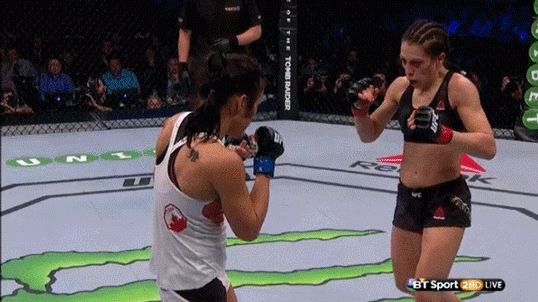Short Answer: Less angular momentum, which is useful for spinning kicks or for rapid-fire kicks.
Another Possible Short Answer: Because it looks good and that's the main purpose of the forms.
Long Answer:
There are different ways of abusing physics to achieve a roughly similar result in martial arts. For example, in a "Muay Thai" roundhouse kick where you step out with the left leg and then swing the right leg through, the left leg is pulling the kick through. In a "Taekwondo" roundhouse kick where you chamber the right leg, pivot on the left foot, and snap the right leg; the left leg is pushing the kick through. Both generate a tremendous amount of power in the same direction, but with different biomechanics.
In the case of the arms, there are at least 5 ways they can be used properly during a roundhouse kick:
- Swinging as a counter-balance
- Driving through the target
- Protecting yourself
- Grappling
- Clutched in tight
What is the benefit of each of these?
Swinging as a counter-balance gives you the best rhythm with your kicks. It gives you the best balance with the "Muay Thai" kick, and gives you good balance of speed and power with the "Taekwondo" kick. However, it does leave your head open, so if you don't snap back to the guard fast enough, there is an opportunity for your opponent. Also, in my experience as a coach, I've seen way too many people overexaggerate this motion to the point it actually slows them down.
Driving through the target (meaning your shoulder and elbow turn with the rest of your body) is a very committed kick, but is the best way to get your full weight into the kick, especially with a "Taekwondo" kick.
Protecting yourself is important. On some kicks, your head naturally turns away from your opponent. However, often in Taekwondo you're both kicking at the same time. "Protecting yourself" doesn't necessarily mean protecting your head. You might have your hands nearer your midsection to protect against body kicks.
Grappling is something you see more in self-defense curriculum, since it's not allowed in WT rules. For example, punch defense where you block, grab, and then pull them into the kick.
Clutched in tight gives you less angular momentum, and a much more stable upper body. This is very useful for spinning kicks like back kick, spinning hook kick, or tornado kick. It's good for fast kicks that are mostly from the leg, especially the kind of kicks where you do multiple kicks without putting your foot down.
Here's a video by Ginger Ninja Trickster (who has probably the best kicking tutorials on Youtube) covering these kinds of kicks. You'll notice his arms aren't clutched in tight, but it is the same concept.
I also notice the same thing in this video with Bill "Superfoot" Wallace. Again, his arms aren't clutched in the same way, but they're relatively static compared to the pump motion you see others do.

